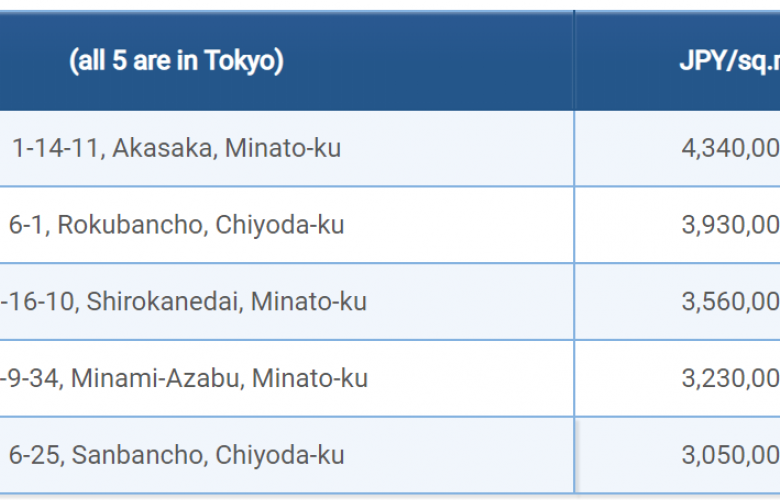On March 19, 2019, the Ministry of Land, Infrastructure, Transport, and Tourism announced the official land prices as of January 1, 2019. The data for 2019 shows a 1.2% nationwide increase in the fluctuation of the average prices for all types of land zoning. The prices have risen back up to 40% of the peak price from 1991, and the price’s fluctuation has resulted in 4 year consecutive increase. The current trend shows that, in response to an increase in foreign visitors, many new hotels and stores are being opened. This is in turn contributing to a 2.8% rise from 2018 (1.9% rise in 2018 from 2017) and is the 4th consecutive year that the national average land price for “commercial areas” has risen. Another trend shows that the 0.6% rise from 2018 (0.3% rise in 2018 from 2017) and the 3-year consecutive rise in the national average land price for “residential areas”, can be attributed to actual market demands combined with ongoing government support policies such as monetary easing.
The 2019 average land price for Tokyo has seen a 4.2% price increase from 2018 for all types of zoning. The 2018 price increase from 2017 was 3.4%. The land price, along with the rate of increase, has continued to grow for 6 consecutive years.
Related Reading: Get to know Yasuko Suzuki of PLAZA HOMES
The 2019 price increase for residential areas was 2.9% which is a 0.5% increase over the 2.4% increase in price from the previous year (2017-2018). Tokyo’s 2019 average land price increase in its 23 wards was 4.8%, which is a 0.9% increase over the 3.9% increase in 2018. Furthermore, when compared to 2018, there are more wards in 2019 that have had increases of more than 5.0%. This marks 2019 as the 6th consecutive year that the average land price rate in Tokyo's 23 wards has increased. The top 10 spots on the rankings for the highest price increase from the year 2018 include new entries for 2 land points in Akabane, Kita-ku, and also 1 land point in Kitasenju, Adachi-ku. The highest rate of average increase within the 23 wards–when compared with the previous year (2018)–was 8.6% in Arakawa-ku, followed by 7.2% in Taito-ku, and 7.1% in Kita-ku, each are showing an increase higher than in 2018. This result takes into consideration that housing in the suburban wards are less expensive than in Central Tokyo but the areas are becoming more convenient for transportation than in they were in the past.
The 2019 official land price ranking for residential properties (shown below) shows that 5 of the highest land prices in Japan are within Tokyo’s borders. The most expensive place is “1-14-11, Akasaka” in Minato-ku at 4.34 million yen per 1 square meter, making it the highest land price point–for the 2nd consecutive year–with its high increase rate of 8.2% from 2018. In Akasaka area various redevelopment projects have been carried out one after another to meet the increasing demands for apartments from a more affluent populace that like to live there, such as IT company owners and people working in the entertainment business. Minato-ku occupies 3 spots on the 2019 top 5 highest land price ranking in Japan.
2019 Official Land Price Ranking by Property Nationwide
(Residential Properties)

(Source: 2019/03/20 NIKKEI Newspaper)
What is Official Land Price?
Based on the Public Notice of Land Prices Act, the Land Appraisal Committee of the Ministry of Land, Infrastructure, Transport and Tourism selects the points of land, evaluates the price of each point of land as of January 1st every year, and announce it as a benchmark price for land transactions. The total selected points of land in Tokyo as of year 2019 are 2,602 points; the number of points per each purpose are 1,705 points for residential areas, 850 points for commercial areas, and 39 points for industrial areas, 8 points for forest lands, respectively.
Sources: Ministry of Land, Infrastructure, Transport, and Tourism, PLAZA HOMES,
Similar to this:
Get to know Yasuko Suzuki of PLAZA HOMES
Apartment for rent along Tokyo Bay watercourse in Minato
What do Japanese apartment owners need to know about long-term repair plans?







